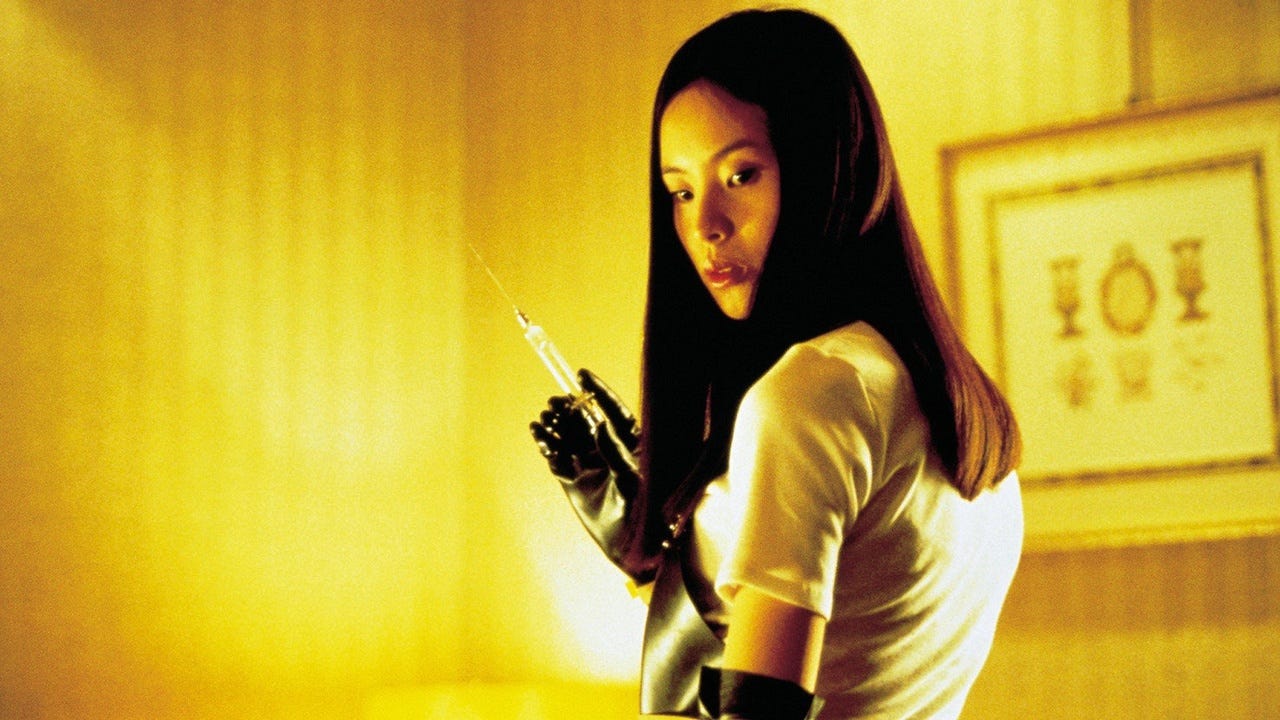Films: Ring (1998), Perfect Blue (1997), Godzilla (1954), Audition (1999), and Ju-On: The Grudge (2002)
Directors: Hideo Nakata, Satoshi Kon, Ishirō Honda, Takashi Miike, and Takashi Shimizu
Books: Ring by Koji Suzuki and Audition by Ryu Murakami, Perfect Blue: Complete Metamorphosis by Yoshikazu Takeuchi
These are all pieces of media in the general zeitgeist. Through them, we can begin to understand what makes Japanese Horror unique. Godzilla depicts Japan’s post-war nuclear anxiety, manifested in the creation of the Kaiju subgenre. Ring and Ju-On introduced American audiences to the world of psychological, mixed with mundane supernatural. Ring also allows us to dive into the literary side of the genre, as there is a several book series the film is based off of. Audition is often considered a gateway film into extreme horror, and Ryu Murakami has a number of grotesque novels we will explore. Finally, Perfect Blue is a taste of horror anime, with a mind-bending plot and beautiful 90s animation. Despite being in the first tier, these films and books are an intense way to dive into the genre, so if you aren’t seasoned perhaps start with the American remakes of Ju-On and Ring.
Discussions: Kaiju and Post-War Japan, unsettling mundanity, intro to extreme, book to screen adaptations, and horror anime.
Essays and Articles:
Cameron, Sarah. 2005. “Japanese Horror cinema—real and Imagined Folklore and Representations of Women in Ju-On: The Grudge and Ring”. Contemporary Legend Vol. 8 (December): 67-93.
Dew, Oliver (2007). “Asia Extreme: Japanese cinema and British hype” New Cinemas: Journal of Contemporary Film, Volume 5, Number 1: 53-73(21).
Głownia, Dawid. “Socio-Political Aspects of Kaiju Eiga Genre: A Case Study of the Original Godzilla.” Silva Iaponicarum, 2013, nr 37.
Hantke, Steffen (2005). "Japanese Horror Under Western Eyes: Social Class and Global culture in Miike Takashi's Audition". In McRoy, Jay (ed.). Japanese Horror Cinema. Edinburgh University Press.
Kalat, David (2007). J-horror: The Definitive Guide to The Ring, The Grudge and Beyond. Vertical.
Kapur, Nick (2018). Japan at the Crossroads: Conflict and Compromise after Anpo. Harvard University Press.
Klemm, Alexander J. (1997). “No Forgiveness for Lies: Deception and Retribution in Ryu Murakami’s Audition” Asian Journal of Literature, Culture and Society, 172-181.
Loriguillo-López, Antonio (2020). “Making Sense of Complex Narration in Perfect Blue.” Animation, vol. 15, no. 1, 77–92.
Martin, Daniel (2009) “Japan’s Blair Witch: Restraint, Maturity, and Generic Canons in the British Critical Reception of Ring” Cinema Journal, vol. 48, Number 3, Spring: 35-51.
Mes, Tom (2003). Agitator: The Cinema of Takashi Miike. FAB Press.
Vohlidka, John (2015). “Atomic Reaction: Godzilla as a Metaphor for Generational Attitudes Toward the United States and the Bomb.” The Atomic Bomb in Japanese Cinema: Critical Essays.
Podcasts:
Headgum (2016). “Ep 206- Ring, by Koji Suzuki” Overdue.
Muncer, Mike (2018). “Ghosts Ep: 13 Ringu (1998) & Ju-On (2002)” Evolution of Horror.
Smith, Zoe Rose (2019). “Extreme Horror Essentials PT 6: Audition” Zobo With a Shotgun.
Subissati, Andrea & West, Alexandra (2018). “Episode 93. Candid Camera: Perfect Blue (1997) and Cam (2018)” Faculty of Horror.
Neva notes: I thought hunting down books for this tier would be easy, but I haven’t had any luck at my local bookstores. Thriftbooks have been flighty as well. Thankfully all the film titles were available at Video Universe, so I have watched Perfect Blue, Godzilla, and Ju-On thus far. Audition was put on back-order so it could take a while to receive. In the meantime I will be looking through some of the above articles and podcasts to see what I can learn about this introductory tier to Japanese Horror.


I'm already setting up a regular movie night with Sydney on the simple grounds of "looks like Neva's studying these!" I'm personally a fan of the depth Godzilla's themes can reach. Can't wait to say I've watched every one of these movies, let alone look into the books & essays.